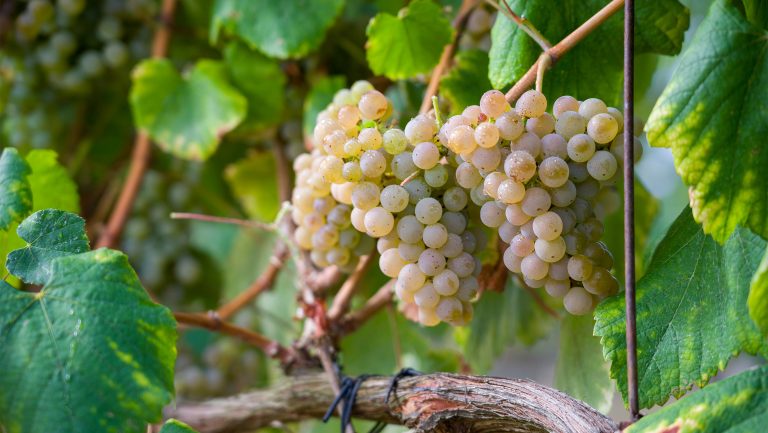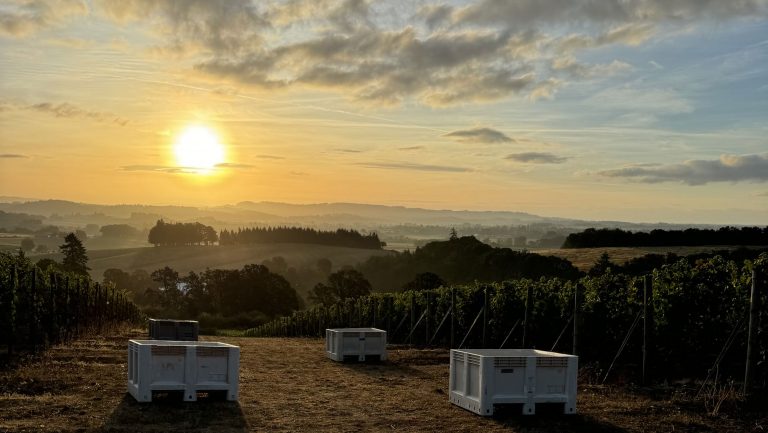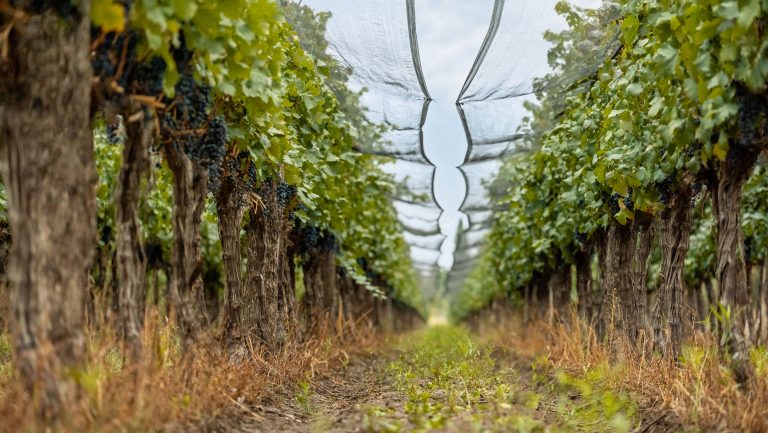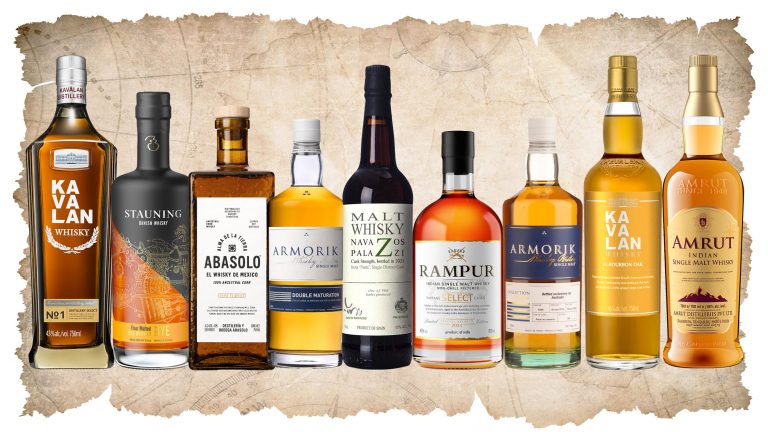Over the past 20 years, Vinho Verde has become somewhat of a household name—quite a feat for a relatively small Portuguese region. But amidst the low-alcohol, spritzy “porch pounders” that U.S. consumers have come to know and love, another side of Vinho Verde has emerged: still fresh and easy-drinking, but with more intensity, complexity, and minerality—and a slightly higher price point.
Now, more of these premium Vinho Verde producers are labeling their wines with one of the region’s nine subregions, a move theoretically aimed at highlighting the superior terroirs and varieties within Vinho Verde (and therefore underscoring its premium potential). Is the U.S. market ready to embrace this other side of Vinho Verde wines—or is the region’s “cheap and cheerful” reputation too entrenched to make room for higher-achieving wines?
Inside Vinho Verde’s Premium Landscape
The U.S. was the number one export market for Vinho Verde in 2020, according to provisionary data from the Vinho Verde Viticulture Commission (CVRVV), and exports have grown by nearly sixfold since 2000. These exports were dominated by inexpensive, fizzy white wines from big brands, many of which are carbonated and may contain residual sugar. But only in the past five to 10 years have premium Vinho Verdes had more of a presence in the U.S., says Rui Abecassis, founder and partner of Olé & Obrigado, an importer of Portuguese and Spanish wines.

Don’t miss the latest drinks industry news and insights. Sign up for our award-winning newsletters and get insider intel, resources, and trends delivered to your inbox every week.
“As the category grew, smaller producers started offering different takes on Vinho Verde,” says Abecassis. “These higher-end Vinho Verdes have since caught the attention of wine intelligentsia.”
To clarify, premium Vinho Verdes are rarely expensive: most retail for under $30, with rare exceptions (such as Luis Seabra’s Granito Cru Alvarinho, which often hovers around $48 on retail shelves).
Typically, these premium Vinho Verdes (which represent around 20 percent of the region’s production, according to the CVRVV) are more “serious”—dry and still, with more intense, complex flavors and noticeable minerality. This style is gaining momentum amongst producers, observes Abecassis. “If the wines are good, why carbonate and sugar them? It’s an ongoing trend in Portugal, too.”
While many simpler Vinho Verdes taste similar, these more complex versions showcase the region’s potential for diversity. Many are labeled by grape variety or subregion (or both), and some are vinified using atypical techniques like skin maceration, barrel fermentation, or amphora aging.

Pushing Subzones into the Spotlight
This move towards subzone-specific labeling presents an interesting question for premium Vinho Verdes: Could this help differentiate terroir-specific, premium wines from the average Vinho Verde, or will it merely confuse consumers while failing to capitalize on the region’s name recognition? According to data from the CVRVV, roughly 14 percent of Vinho Verde wine bottled between January and July 2021 was labeled by subregion, and much of this came from the Monção e Melgaço, which is perhaps the best-known (and hardest to pronounce) of Vinho Verde’s subzones.
Located in the northeastern part of Vinho Verde, just across the river from Spain’s Rías Baixas region, Monção e Melgaço is essentially an amphitheater with granite soils sheltered from Atlantic influences, providing ideal conditions for the production of flavorful, medium-bodied Alvarinho wines. The subregion experienced a surge of Alvarinho plantings in the 1970s, followed by a rebirth of small estates to capitalize on these plantings in the late 1990s.
“They focused on Alvarinho and believed in the product,” says Abecassis, who notes that the subzone has the longest history of producing more serious wines. Many of Vinho Verde’s best-known premium producers, such as Soalheiro, which crafted its first wine in 1982, and Anselmo Mendes, who produced his first wine in 1998, call Monção e Melgaço home, and the subzone began a formal promotional program in 2016—the first and only promotional campaign for a Portuguese subzone.
But Monção e Melgaço isn’t the only area in which producers are choosing to label their wines by subzone. “I do believe that Monção e Melgaço opened the conversation to other subregions,” says Bruno Almeida, a New York-based sommelier, wine educator, and Portuguese native. He points to regions like the more southerly Baião, which shows potential with the Avesso grape, and Lima, south of Monção e Melgaço, which specializes in Loureiro and bottled the second-highest amount of subzone-specific wines in the first half of 2021. Abecassis points to Basto as a subregion with potential for red Vinho Verdes (“In the next 10 to 15 years, I think you’ll see more reds from the Vinho Verde area,” he adds).
Others are crafting premium Vinho Verde within a single subzone but choose not to label it as such, including several of the Aphros wines, which come from Lima, and Asnella, which comes from a single vineyard in Basto. Large producers are taking note of the potential for premium Vinho Verde as well; Esporão, which owns estates in the Alentejo and Douro, as well as the beer company Sovina, purchased top Lima producer Quinta do Ameal in 2019.
Often, these subregions are tied to a specific grape variety, and part of Monção e Melgaço’s success has been its strong specialization in Alvarinho. Cazas Novas, for example, emphasizes its variety (Avesso) more than its Baião subzone on the label.
“The art of blending is quintessential in Portugal and Vinho Verde, but the monovarietal path opens up a world of possibilities,” says Almeida. “Producers are giving a lot of thought after decades of blended wines and trends putting the region in a square box.”
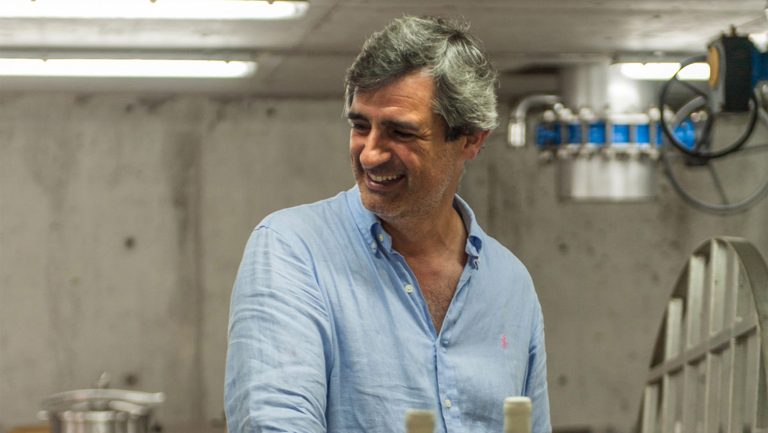
The Market for Premium
So far, the market for premium Vinho Verde in the U.S. seems to be strong. According to the CVRVV, the price point for Vinho Verde has increased consistently in export markets over the past 20 years as a result of consumer awareness and demand as well as the introduction of more premium Vinho Verdes. “We think the U.S. market is ready for premium Vinho Verde wines,” says Manuel Pinheiro, the president of the CVRVV.
Early success is being fueled by buyers and sommeliers who have championed these wines as cult favorites; producers like Soalheiro, Anselmo Mendes, Aphros, and Luis Seabra (a Douro producer who produces one Vinho Verde) are all fixtures on top wine lists and retail shelves. “Many in the professional wine community have changed their view on Vinho Verde and the potential of the region,” says Cyrus Tolman, a senior sales associate and the Iberian and South American wine buyer at Texas’ Houston Wine Merchant.
Yet at retail, selling these wines can be more of a challenge, Tolman notes. While Abecassis says that curated retail shops like Crush Wine & Spirits and Verve Wine have been frequent placements for his premium Vinho Verde producers, Tolman observes that “most consumers still have the view that the wines should be light, slightly effervescent, low-alcohol, inexpensive, and immediately quaffable.”
It may be easier to change these consumer perceptions in restaurant settings, where sommeliers and servers can easily pour a taste as proof of quality. “High-end Vinho Verde really needs context for people to be sold on the idea,” says Tolman. “People will realize the incredible value and nuance to be found in premium Vinho Verde.”
Similarly, most consumers are unaware of specific Vinho Verde subzones at this point—or even that the region has subzones at all—negating the value of subzone-specific labeling for premium wines at the consumer level. Instead, Abecassis believes the trend for varietal labeling is likely to gain more traction in the U.S., since consumers often select and explore wines by grape variety.
Indeed, much of the CVRVV’s goal in communicating the individual subzones of Vinho Verde is to emphasize that Vinho Verde crafts diverse styles of wine. “Having the subregion labeled on the bottle will help the buyer better understand the diversity of a region that has been seen as whole, but it’s much wider than just that,” says Almeida.
Building trade appreciation for Vinho Verde’s subzones is the most critical step forward for the region, Tolman believes. While “it will take industry professionals time to fully grasp the intricacies of all of the subzones, the usage of subzones for the purposes of labeling is necessary if Vinho Verde is ever going to dislodge itself from its historic branding and positioning to one that is more serious and evolved.”

Vinho Verde’s Future
Right now, Pinheiro says that there are two “families” of Vinho Verde: the “classic” (young, light, and fresh) and the “premium” (intense, complex, mineral). Going forward, it may not be a question of Vinho Verde choosing one style or the other, but establishing itself as a region for both.
“We expect more representation of premium wines in the region, but what we envision is a region that produces excellent white wines in both segments: light and fresh styles as well as intense and age-worthy,” says Pinheiro. Almeida wonders if these two “categories” of Vinho Verde should be clearly designated on the label, with slightly fizzy, entry-level wines having a “frizzante”-style designation.
Labeling and communication logistics aside, one thing is certain: there is a U.S. market opening for these premium Vinho Verdes. “As the cost of traditionally light, mineral-driven whites like Chablis increase in price and become more and more out-of-reach for your average consumer, there is a niche left behind for serious but affordable whites,” says Tolman. “As long as Vinho Verde and its vintners continue to push the region to greater heights, and they can continue to be price competitive, I see no reason that premium Vinho Verde won’t take off in due time.”

Dispatch
Sign up for our award-winning newsletter
Don’t miss the latest drinks industry news and insights—delivered to your inbox every week.
Courtney Schiessl Magrini is the editor-in-chief for SevenFifty Daily and the Beverage Media Group publications. Based in Brooklyn, she has held sommelier positions at some of New York’s top restaurants, including Marta, Dirty French, and Terroir, and her work has appeared in Wine Enthusiast, GuildSomm, Forbes.com, VinePair, EatingWell Magazine, and more. She holds the WSET Diploma in Wines. Follow her on Instagram at @takeittocourt.


